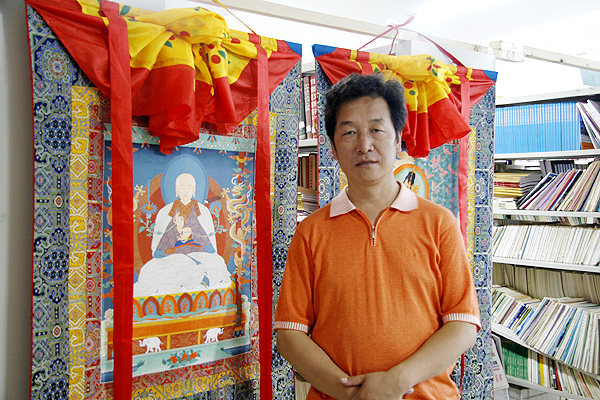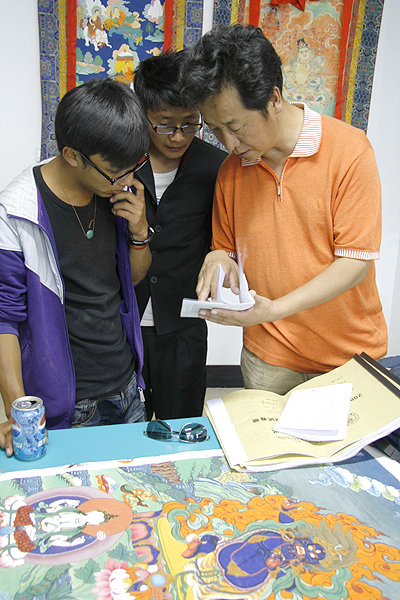Thangka Painting in Tibet

Dazha, a tanned Tibet boy of 19, is one of the 14 sophomores studying Tibetan paintings at Tibet University.
"Thangka is a traditional painting genre of the Tibetan-inhabited area. I can almost see Thangkas and Thangka painters every day since I was a kid. Wherever there are Tibetans, there is Thangka. Thangka is an inseparable part of Tibetan life. As a result of that, I developed an interest in painting Thangka."
A youth from northern Tibet's Amdo area, Dazha proudly said he has completed three Thangka paintings, but apparently the young man felt he owed a great deal to his teacher, as he repeatedly emphasized that his work was finished "under the guidance of his teacher."

His teacher, Penba Wangdu, a lecturer of Tibetan Fine Arts, is an open-minded, well-traveled Tibetan artist. He frequently appeared in art seminars in Beijing, or even as far as the Scandinavian country of Denmark. His works appeared among cultural displays at the venues of the 2008 Beijing Olympic Games and the Chinese ethnic Culture Park.
Penba Wangdu was once a student at Tibet University in the 1980s, but besides college education, he also benefited greatly from his uncle, who had learned to become a Thangka painter in the past.
"I was exposed to traditional Tibetan artistic painting techniques since I was a kid. Though I didn't paint Thangka, I watched my uncle painting it, and I learned a lot about Thangka painting. It could be said that my uncle exerted a subtle influence on me, benefiting me a lot."
Unlike their grandfathers, today's Thangka students browse masterpieces inside a digital library, analyze patterns and diagrams from the image on an electric projector, and study chemistry to see the complexity of the Thangka dye.
"The traditional education goes the way of master and apprentice. The teaching focused on the practice of painting techniques with the aim of teaching students a means to make a living. Nowadays in our university, we teach both techniques and artistic theories on traditional Tibetan painting, traditional Chinese painting and Western painting."
Such a workload is something today's Thangka students have to endure.
"In our every day school life, we attend various public courses such as Tibetan Art History and Western Art History. We study everything about Art. At professional courses, we learn drawing Thangka. We also spend much of our leisure time practicing, practicing, and practicing."
Dazah said they also learn from western masterpieces. His favorite artist is Albrecht Durer, a German Renaissance master painter. From studying Western paintings, Dazha said he got inspired in terms of the use of color.
Go to Forum >>0 Comments
 Add your comments...
Add your comments...
- User Name Required
- Your Comment
- Racist, abusive and off-topic comments may be removed by the moderator.
|
|||||||||||||||||
|
|||||||||||||||||
 0
0 







